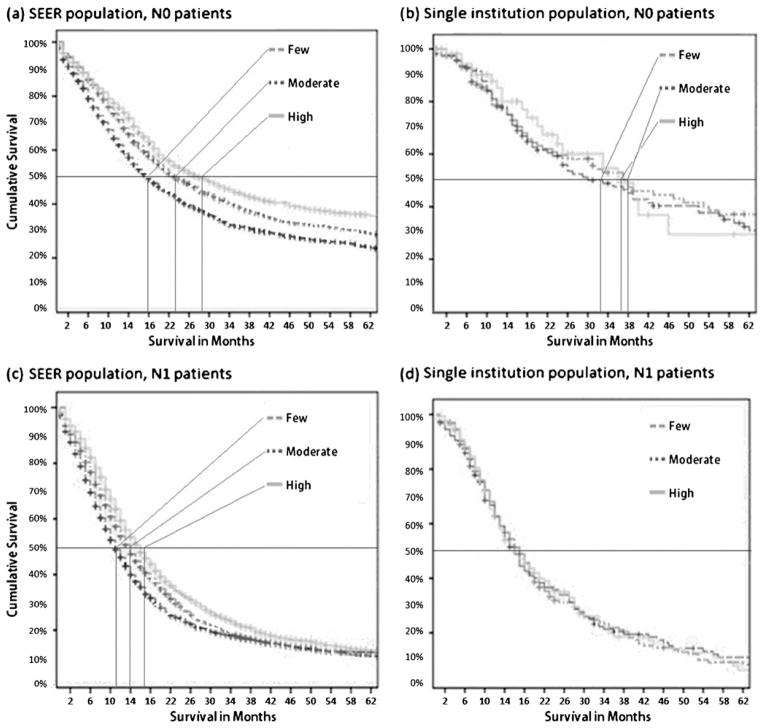Fig. 1.
In N0 patients (a and b), the number of examined LNs positively correlated with survival. In SEER (a), patients with ≥13 LNs had better survival compared to those with ≤5 LNs (28 months vs. 18 months). In the MGH (b), patients with ≥17 LNs trended towards a better survival (37 months) than patients with ≤9 LNs (33 months), p=0.63. Among the N1 patients (c and d), the numbers of lymph nodes examined exert a variable effect on overall survival. In the SEER population (c), higher LNs examined improved survival (≥13LNs 16 months vs. ≤5 LNs 11 months, p<0.001) but this effect did not extend to the MGH patients (d)

